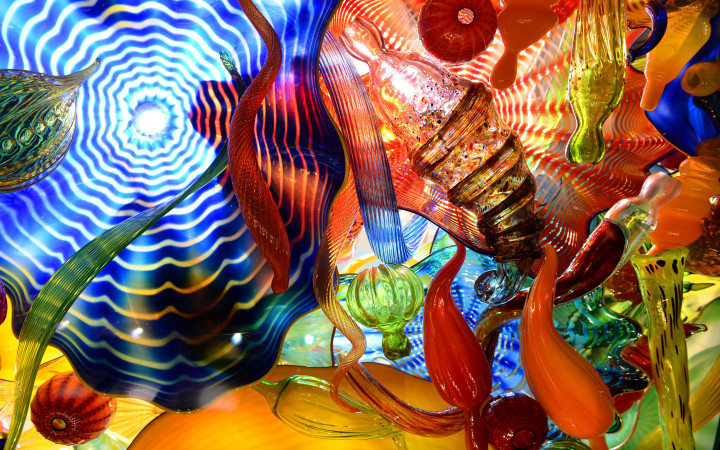Today’s Wonder of the Day was inspired by Paris. Paris Wonders, “what is glass blowing” Thanks for WONDERing with us, Paris!
It’s all around you every day, but you see right through it. What are we talking about? Glass, of course!
You might wake up and look out your bedroom window to check on the world around you. You probably look in a mirror to brush your hair. Did you look through car or bus windows on your way to school?
But those aren’t the only experiences you probably have with glass. Did you drink milk out of a glass during breakfast? Maybe you ate cereal out of a glass bowl. If you took a few minutes to look around your home or school, you’d probably see dozens of things made of this material.
Much of the glass you see is flat. For example, windows and mirrors are usually simple, flat pieces of glass. Other types take on different shapes. Can you look around and find any examples of glass that are curved, shaped, and even multi-colored?
Did you ever stop to WONDER about how people shape glass? Any kid who has ever broken a window or a glass bowl knows how fragile it can be. You can’t just take a glass window and bend it, because it will break. How do we get all those glass items that come in so many different shapes and sizes, then?
Glass is a unique, versatile material that can be shaped in many different ways to make a wide variety of products. Those finished products are obviously quite solid, even if they’re fragile. Many of them, though, start out as a substance that looks more like a liquid!
Many of the most unique glass objects you’ll see are the end result of an artistic process known as glassblowing. The art of glassblowing has been around a long, long time. How long? Historians can trace it all the way back to the Roman Empire. In fact, it’s the first century B.C.E. Syrians who are usually given credit. They discovered that glass could be blown from the open end of a hollow tube and turned into all sorts of different shapes.
Although glass is a solid, it’s an amorphous solid. That means it’s rigid but has a molecular structure that’s random like a liquid. It’s this interesting structure that makes glass transparent.
Glass is made up of silica, which is basically a high-quality type of sand. Other materials, such as metals and metal oxides, are added to silica to lower the melting point of the mixture. Other key ingredients often found in glass include soda (sodium dioxide) and lime (calcium oxide).
Glassblowers mix these ingredients to make a batch of glass, which they will melt in a furnace in their workshop (called a hot shop). The batch is heated in a pot called a crucible to an initial temperature of over 2,000º F.
While glass can be blown by one person alone, it’s a challenging task that’s usually best tackled by a team. The lead glassblower is called the gaffer. The gaffer uses a blowpipe (a hollow tube made of iron or steel that’s usually about four feet long) to dip into the crucible to coat the end with a blob of molten glass.
The gaffer then blows into the blowpipe to create a bubble in the molten glass. Depending upon what kind of product the gaffer wants to make, a large, flat surface called a marver can be used to shape the glass. Other tools, including blocks, jacks, heat shields, and paddles help the gaffer and his team shape the molten glass into the final product desired.
As the glass is being shaped, it often cools to the point where it becomes unworkable. When that happens, the glass must be put into a second furnace (called the glory hole) to reheat it to the point where it’s once again flexible enough to shape further.
When the glass product is finished, it must be cooled carefully. A third furnace, called an annealer, is used to slowly cool the glass product to the point where it becomes a sturdy solid that’s still transparent. If glass is cooled too quickly, it can crystallize and lose its transparency while also becoming extremely fragile and subject to breaking easily.
Would you like to try glassblowing one day? It’s an artistic process that many people enjoy. With practice, you may even be using your own handmade glass pieces at home one day!
Standards: CCRA.L.3, CCRA.L.6, CCRA.R.1, CCRA.R.2, CCRA.R.4, CCRA.R.10, CCRA.SL.1, NCAS.A.1, NCAS.A.2, NCAS.A.3




